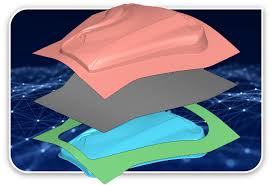Dynaform is a product from ETA and part of a series of engineering software specifically designed for the simulation and analysis of sheet metal forming and stamping processes.
With this software, all stages of the sheet metal forming process can be simulated, and the required dies can be analyzed.

This type of simulation and analysis offers advantages such as eliminating the need for tool-making, reducing production costs, shortening production cycle time, minimizing trial-and-error attempts, and increasing productivity and production cycles for engineers and company managers.
Dynaform is a specialized engineering tool, and its new version has undergone many changes.
This software is used for optimization and modeling various engineering systems, and due to its simple user interface, learning it is quick.
Using this software, you can save time and reduce industrial development costs.
The powerful analyzer of this software can fulfill your computational needs.
Its calculation speed is very high, and for Windows 7 and above, it can utilize multi-core systems to further improve speed.
With this software, you can examine alternative systems and evaluate them in different aspects.
By simulating each part of your model, Dynaform will display your production system processes.
Dynaform supports various models such as Blank Size Engineering (BSE), Formability Simulation (FS), Die Evaluation (D-Eval), and Die System Analysis (DSA).
Among these models, BSE is used to analyze the empty spaces in the system, the maximum material consumption, and the associated cost.
The plugin for this section of the software is used to predict the thickness and thinness of the wires used in the model.
FS is used for analyzing hidden sections of your system that may have issues, and with it, you can troubleshoot your model.

Key Features of Dynaform Software: